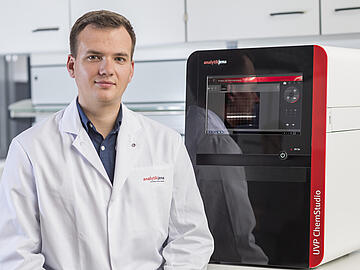
Detecting proteins on a Western blot
Wed 19 Aug, 2020
Detecting proteins on a Western blot: color, chemiluminescence, chemifluorescence, or fluorescence?
Western blotting is a popular technique in cell and molecular biology for detecting specific proteins. Historically, researchers used a chemiluminescent signal and darkrooms to detect binding. With new advances in technology such as charge-coupled devices (CCDs) and new labels, other detection methods, including fluorescence and chemifluorescence, are becoming more common.
What are the differences?
Western blot detection methods broadly group into two categories: enzymatic and fluorescence. Colorimetric and chemiluminescent detection methods fall under the enzymatic detection umbrella. They rely on primary antibodies to bind to the protein of interest and secondary antibodies conjugated to enzymes that provide the signal. The most common enzymes are horseradish peroxidase (HRP) and alkaline phosphatase (AP).
Colorimetric detection methods require the secondary antibody to react with a substrate to produce a colored precipitate, while chemiluminescent detection relies on the secondary antibody reacting with a luminescent substrate to produce light.
To detect with fluorescence, researchers use secondary antibodies that are directly conjugated to fluorophores, such as Cy3 or Cy5. A light source within an imager excites these fluorophores, which means that no substrate is necessary. Chemifluorescence relies on principles from chemiluminescent detection; an enzyme-conjugated secondary antibody reacts with a fluorogenic substrate to produce a fluorescent product.
Enzymatic vs. fluorescent detection methods
Chemiluminescent detection methods are simple to perform and require readily available reagents and antibodies. Although film imaging is still common for chemiluminescent experiments, CCD imaging is now a popular choice. Commercially available enhanced chemiluminescence (ECL) kits increase light emission, which enables scientists to produce better images. However, chemiluminescence provides an indirect protein quantity assessment, requiring quantitative analysis after protein detection. Further, the technique can suffer from signal saturation and has a relatively narrow dynamic range. Multiplexing is difficult with chemiluminescent detection because the membrane must be stripped and re-probed; this can reduce signal and negatively affect the final results. Chemiluminescence with film detection is considered the most sensitive method, making it useful for detecting proteins with low expression levels.
Colorimetric detection is a cost-effective method because HRP and AP are readily available. Colors deposited by HRP may fade with exposure to light and this approach has a tendency to stain nonspecifically, but AP produces a stable product that does not fade. Sensitivity limits colorimetric detection; the method requires nanograms of protein to produce a signal, unlike other detection methods that require only femtogram protein levels. Colorimetric detection is best for quickly confirming protein presence.
Fluorescence allows scientists to detect multiple targets on the same blot at the same time. This makes the technique particularly useful for detecting a loading control and the protein of interest on the same blot. It also enables researchers to avoid time-consuming membrane stripping techniques. Fluorophore signals more linearly correlate with protein concentration than chemiluminescent signals, and have a greater dynamic range, offering superior sensitivity for low and high protein amounts. However, researchers must consider both the source species and the fluorophore excitation/emission wavelength when selecting a secondary antibody, unlike chemiluminescent techniques, which typically require a single AP- or HRP-conjugated secondary antibody that targets the primary antibody source species. Additionally, fluorescence detection requires a specialized digital imager, ideally with multiple filters for multiplexing.
Chemifluorescent detection methods combine the advantages of signal stability and wide linear range from fluorescence and signal amplification from chemiluminescence. Chemifluorescence can replace any standard chemiluminescent method that requires AP or HRP-conjugated antibodies.
Imaging technology: Getting the most from a Western blot
Analytik Jena’s UVP ChemStudio product family features the newest technology, a new software interface, and top-of-the-line camera options, which guarantee a wide dynamic range of imaging. The imager is suitable for all available Western blot needs. It is available in two different sizes (the smaller ChemStudio and the larger ChemStudio PLUS) and is upgradeable for near infrared (NIR) and multiplexing imaging applications.
The newsletter of Analytik Jena frequently keeps you posted about:
- News
- Trends and developments
- Events
